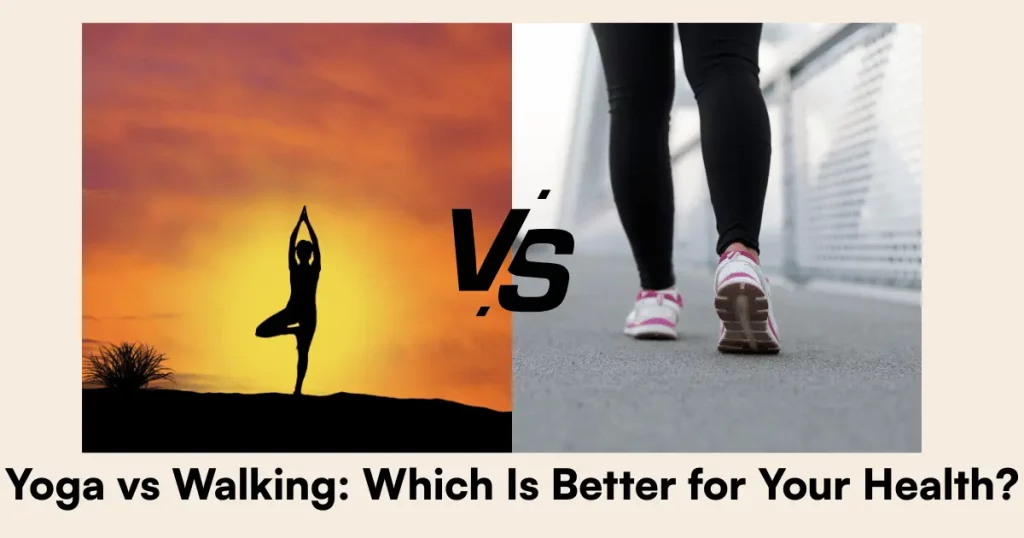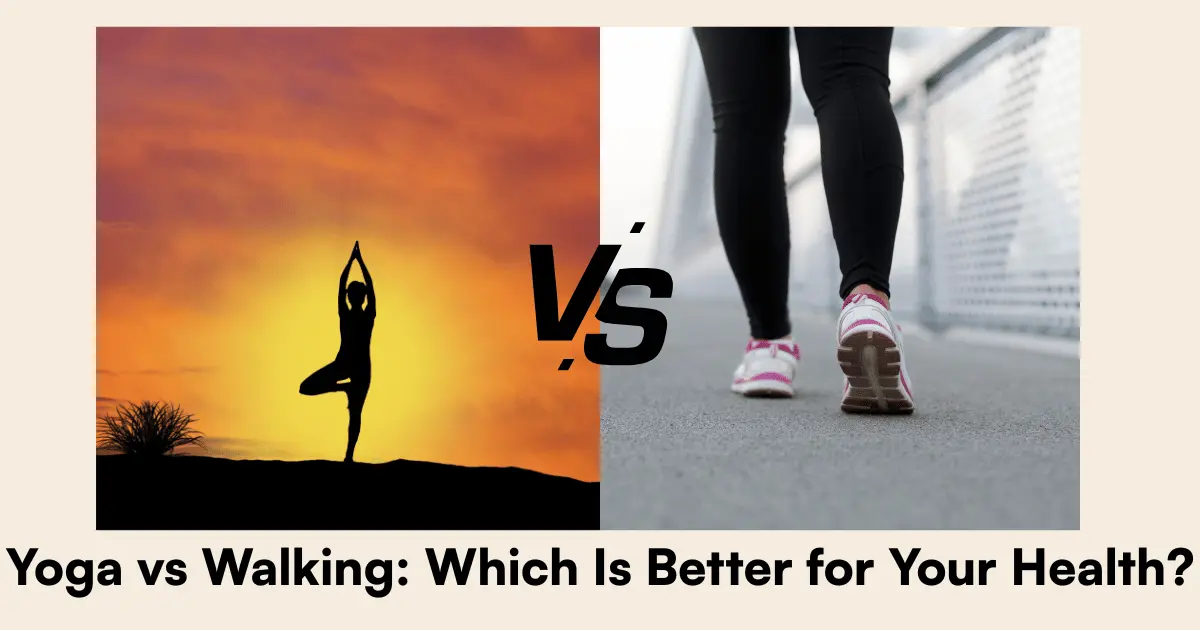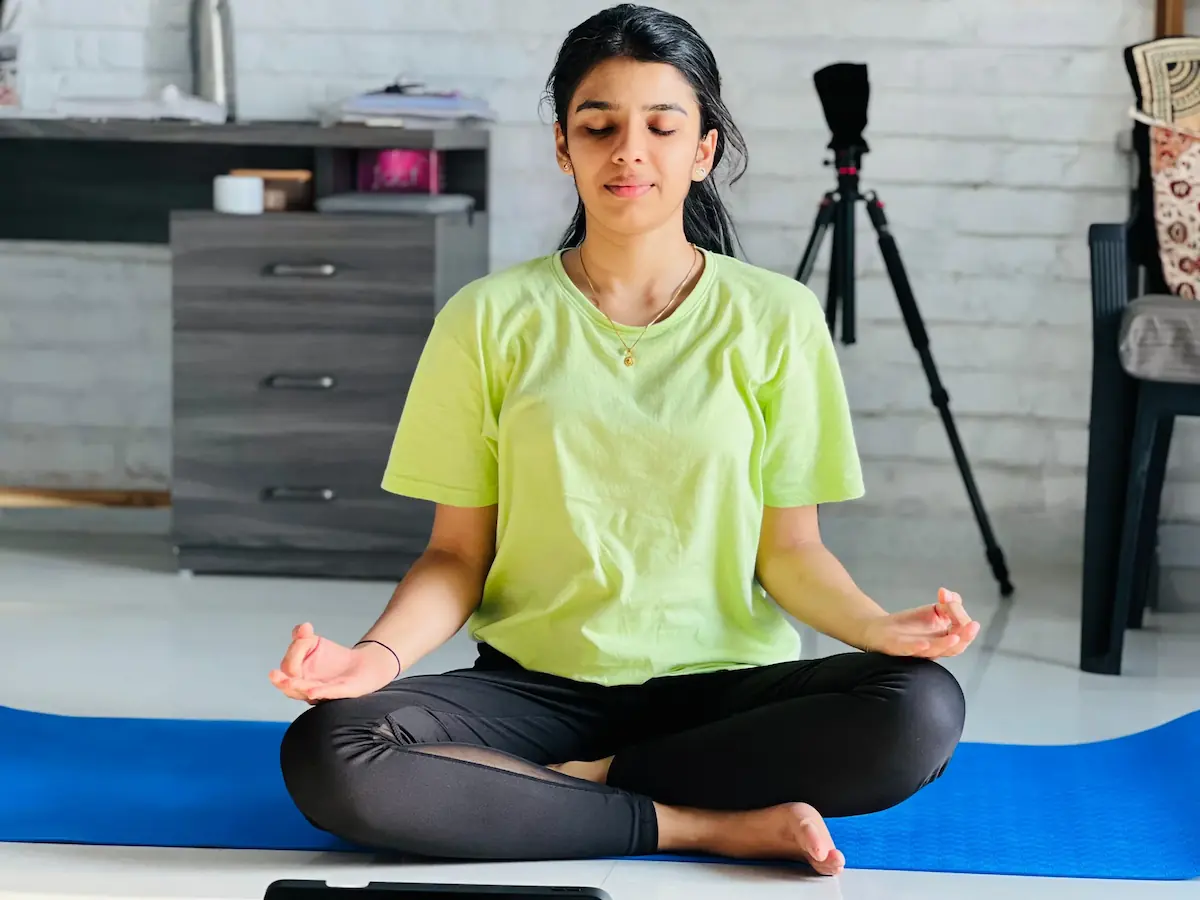Trying to decide between yoga and walking for your daily health routine? Both are fantastic ways to stay active, but they offer different benefits depending on your goals. In this yoga vs walking comparison, we’ll break down how each activity supports your physical, mental, and overall well-being. Whether you’re looking to improve flexibility with yoga for health or boost cardiovascular fitness through walking for health, understanding their unique yoga benefits and walking benefits can help you choose—or even combine them! Let’s dive into the details and find out which might be better for your health needs.
Want to explore yoga’s transformative effects? Check out Changes That Happen in Our Body When We Do Surya Namaskars Daily Morning for insights on a powerful yoga sequence.
Physical Health: How Yoga and Walking Compare

Yoga for Physical Health
Yoga asanas like Downward Dog and Warrior II build strength, flexibility, and balance. A 2022 Journal of Physical Therapy study found that 6 weeks of yoga improves flexibility by 20% and muscle strength by 15%. Poses engage your core, stretch tight muscles, and improve posture, reducing injury risk. However, yoga’s low-impact nature means it burns fewer calories—about 150–200 calories per 30-minute session, per a 2021 American Council on Exercise report. This makes yoga for health ideal for toning and mobility but less effective for rapid weight loss.
Walking for Physical Health
Walking, especially brisk walking, is a stellar cardio workout. A 2023 Circulation Research study noted that 30 minutes of daily brisk walking (3–4 mph) lowers blood pressure by 10% and reduces heart disease risk by 19%. It burns 200–300 calories per 30 minutes, depending on pace and body weight, making walking for health great for weight management. Walking also strengthens leg muscles and improves joint health, though it doesn’t target flexibility or upper body strength as much as yoga.
Winner: Walking edges out for cardiovascular health and calorie burn, while yoga wins for flexibility and overall body strength.
Read More: Yoga vs. Cardio Which One Burns More Fat and Calories
Mental Health: Yoga vs Walking for Stress and Focus
Yoga for Mental Health
Yoga’s combination of movement and mindful breathing—like in Child’s Pose—reduces stress by lowering cortisol levels. A 2023 Journal of Clinical Psychology study found that 15 minutes of daily yoga cuts anxiety by 25%. Poses like Tree Pose also improve focus by requiring balance and concentration, boosting mental clarity by 20% after 4 weeks, per a 2020 Cognitive Science Review. These yoga benefits make it a top choice for mental wellness.
Walking for Mental Health
Walking, especially in nature, is a mood-lifter. A 2022 Journal of Environmental Psychology study showed that a 30-minute walk in green spaces reduces stress by 15% and improves mood by 20%. The rhythmic motion of walking promotes mindfulness, and exposure to sunlight increases serotonin, combating low moods. However, walking doesn’t require the same level of focus as yoga, so its cognitive benefits are less pronounced.
Winner: Yoga takes the lead for stress reduction and focus, while walking excels at improving mood through nature and movement.
Overall Wellness: Long-Term Benefits of Yoga and Walking
Yoga’s Long-Term Impact
Yoga fosters holistic wellness by improving flexibility, strength, and emotional resilience. A 2023 International Journal of Yoga study found that regular yoga practice enhances overall well-being by 25% in 8 weeks. It also improves sleep quality (15% better, per a 2021 Sleep Medicine study) and builds self-awareness, helping you manage emotions. Yoga for health is a lifelong practice that adapts to your needs. Learn more in Ways Yoga Asanas Boost Physical, Mental, and Psychological Health.
Walking’s Long-Term Impact
Walking supports long-term cardiovascular health and weight management. A 2021 British Journal of Sports Medicine study linked 150 minutes of weekly walking to a 20% lower risk of chronic diseases like diabetes. It’s also accessible, requiring no equipment beyond good shoes ($50–$100), and can be done anywhere. Walking builds endurance and joint health, though it may not address flexibility or stress as deeply as yoga.
Winner: Yoga offers broader holistic benefits, while walking is better for sustained cardiovascular health and accessibility.
Accessibility and Convenience: Which Fits Your Lifestyle?
Yoga’s Accessibility
Yoga requires a small space and a mat ($20–$30), but some poses need guidance to avoid injury, especially for beginners. You can practice at home, though classes ($10–$20 per session) or online tutorials add cost. A 15–30-minute session fits busy schedules, and poses can be modified for all levels.
Walking’s Accessibility
Walking is free, requiring only comfortable shoes. You can do it anywhere—parks, neighborhoods, or even indoors on a treadmill ($200–$500). A 30-minute walk is easy to fit into daily life, like during a lunch break. It’s low-risk, needing no training, making it one of the most convenient walking benefits.
Winner: Walking is more accessible and easier to start, while yoga requires a bit more setup but offers adaptability.
Calorie Burn and Weight Loss: Yoga vs Walking
Yoga for Weight Loss
Yoga burns 150–200 calories in 30 minutes, depending on intensity (e.g., a gentle Hatha session vs. a vigorous Vinyasa flow). While it’s not a high-calorie burner, yoga supports weight loss by reducing stress-related overeating and building muscle tone. A 2022 Obesity Journal study noted that yoga practitioners lost 5% of body fat over 12 weeks when paired with a healthy diet. For targeted poses, see Best Yoga Asanas for Belly Fat Reduction.
Walking for Weight Loss
Brisk walking burns 200–300 calories in 30 minutes, making it more effective for weight loss. A 2023 American Journal of Clinical Nutrition study found that 150 minutes of weekly walking led to a 7% body fat reduction over 10 weeks. Walking’s steady pace also makes it easier to sustain for longer periods, increasing calorie burn.
Winner: Walking is better for calorie burn and weight loss, while yoga supports weight management through stress reduction and muscle toning.
Yoga vs Walking: A Quick Comparison Table
Here’s a quick overview to help you compare yoga and walking at a glance:
| Aspect | Yoga | Walking |
|---|---|---|
| Physical Benefits | Improves flexibility, strength, balance | Boosts cardiovascular health, leg strength |
| Mental Benefits | Reduces stress (25%), improves focus | Lifts mood (20%), reduces stress (15%) |
| Calorie Burn | 150–200 calories (30 min) | 200–300 calories (30 min) |
| Accessibility | Needs mat, space, some guidance | Free, needs only shoes, do anywhere |
| Best For | Holistic wellness, stress relief | Cardio health, weight loss, accessibility |
This table summarizes the key differences to help you decide which activity aligns with your health goals.
Which Should You Choose?
Choose Yoga If:
- You want to improve flexibility, strength, and balance.
- Stress reduction and mental clarity are priorities.
- You’re looking for a holistic practice that grows with you.
Choose Walking If:
- Cardiovascular health and weight loss are your main goals.
- You need a low-cost, accessible activity you can do anywhere.
- You prefer outdoor movement and mood-boosting nature exposure.
Combine Both For Maximum Benefits
Why choose? A 2023 Journal of Lifestyle Medicine study suggests combining yoga and walking for optimal health—yoga for flexibility and stress relief, walking for cardio and calorie burn. Try a 15-minute yoga session followed by a 30-minute brisk walk, 3–5 times a week, to cover all bases.
Tips to Get Started
- For Yoga: Start with 15 minutes daily, focusing on poses like Downward Dog and Child’s Pose. Use a mat and follow online tutorials if needed.
- For Walking: Aim for 30 minutes of brisk walking daily (3–4 mph). Wear supportive shoes and choose a scenic route for added enjoyment.
- For Both: Set a schedule, track progress with a journal, and stay consistent.
Real-Life Impact
Consider Priya, a 35-year-old accountant, who reduced her stress by 20% with daily yoga while adding 30-minute walks to lose 5 pounds in 2 months. Or Raj, a 50-year-old retiree, who improved his heart health with daily walks but added yoga to ease back pain. Both show how yoga vs walking can work for different needs—or together!
FAQs About Yoga vs Walking
Which Is Better for Weight Loss?
Walking burns more calories (200–300 in 30 minutes) than yoga (150–200), making it better for weight loss, though yoga helps with muscle tone.
Can I Do Yoga and Walking Together?
Yes! Combining them maximizes yoga benefits and walking benefits—try yoga for flexibility and walking for cardio.
Is Yoga or Walking Better for Stress?
Yoga is more effective, reducing anxiety by 25% with mindful breathing, though walking in nature also helps.
How Often Should I Practice Yoga or Walk?
Aim for 3–5 sessions weekly—15–30 minutes for yoga, 30 minutes for walking—to see steady benefits.
Which Is More Beginner-Friendly?
Walking is easier to start with no training needed, while yoga may require guidance to avoid injury.
Conclusion
In the yoga vs walking debate, neither is universally “better”—it depends on your goals. Yoga shines for flexibility, stress relief, and holistic wellness, while walking excels for cardiovascular health, calorie burn, and accessibility. For the best results, combine both to enjoy the full spectrum of yoga for health and walking for health. So, whether you roll out a mat or lace up your shoes, start today! Which will you try first? Share below and let’s get moving together!

